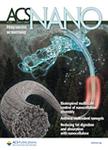版权所有:内蒙古大学图书馆 技术提供:维普资讯• 智图
内蒙古自治区呼和浩特市赛罕区大学西街235号 邮编: 010021

作者机构:Beihang Univ Sch Chem Beijing 100191 Peoples R China Beihang Univ Int Res Inst Multidisciplinary Sci Beijing 100191 Peoples R China Chinese Acad Sci Key Lab Bioinspired Mat & Interfacial Sci Tech Inst Phys & Chem Beijing 100190 Peoples R China
出 版 物:《ACS NANO》 (ACS Nano)
年 卷 期:2025年第19卷第3期
页 面:3019-3036页
核心收录:
学科分类:07[理学] 070203[理学-原子与分子物理] 0805[工学-材料科学与工程(可授工学、理学学位)] 0703[理学-化学] 0702[理学-物理学]
基 金:National Natural Science Foundation of China [51973227, 22005011, 21633014, 51901009, 21988102, 52322312] Fundamental Research Funds for the Central Universities
主 题:confined interface capillary bridge self-assembly sensors
摘 要:Precise patterning of sensing materials, particularly the long-range-ordered assembly of micro/nanostructures, is pivotal for improving sensor performance, facilitating miniaturization, and enabling seamless integration. This paper examines the importance of interfacial confined assembly in sensor patterning, including gas-liquid and liquid-liquid confined assembly, wettability-assisted or microstructure-assisted solid-liquid interfacial confined assembly, and tip-induced confined assembly. The application of capillary bridge confined assembly technology in chemical sensors, flexible electronics, and optoelectronics is highlighted. The advantages of capillary bridge confined assembly technology include the ability to achieve high-resolution patterning, scalability, and material arrangement in long-range order. It is, therefore, an ideal processing platform for next-generation sensors. Finally, the broad prospects of this technology in the miniaturization and integration of high-performance multifunctional sensors are discussed.